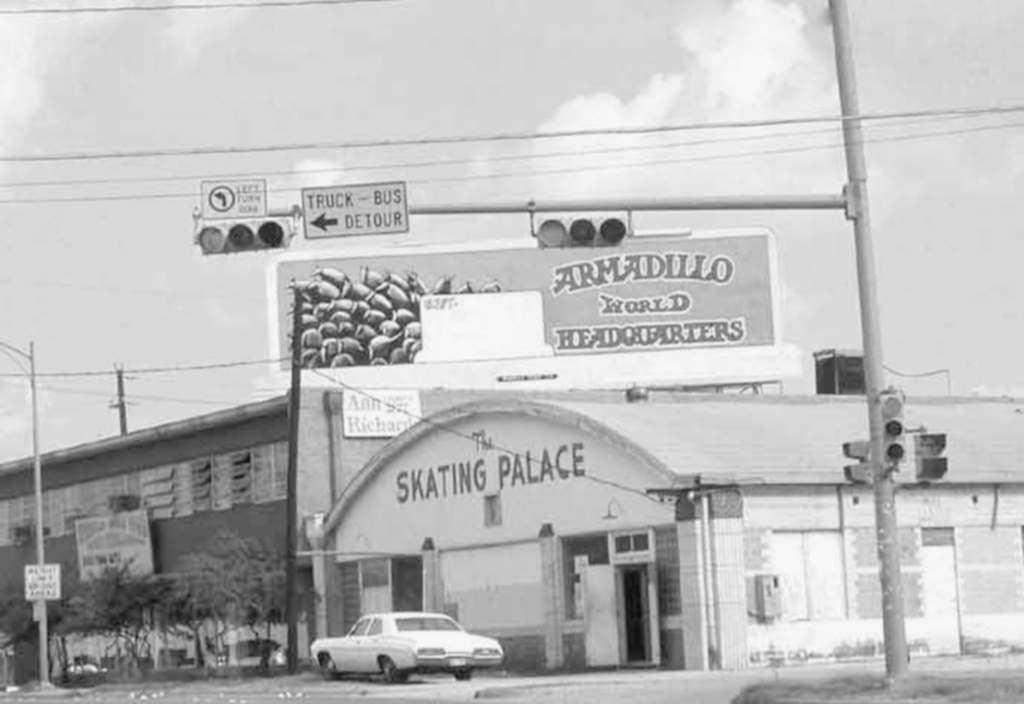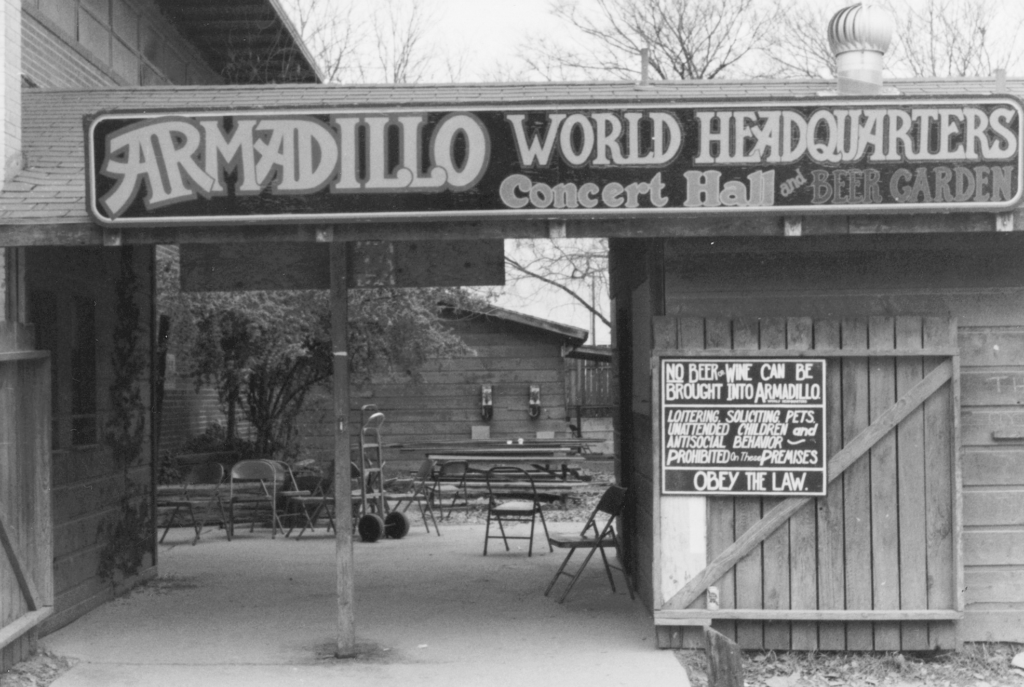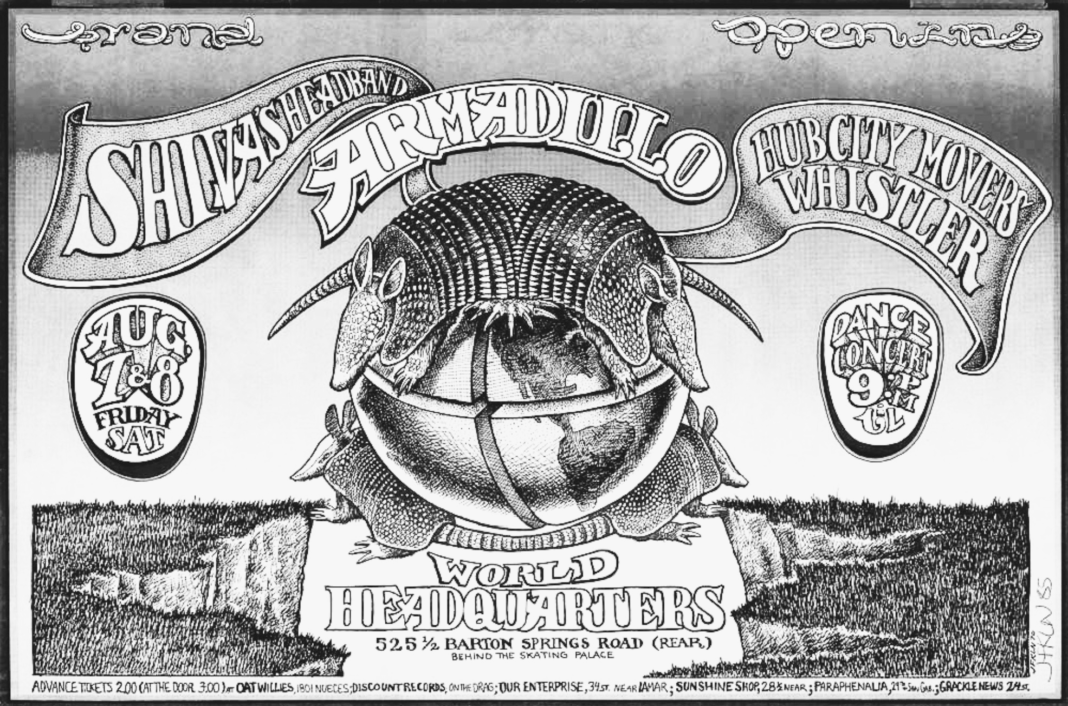
Today Austin, Texas is a technology hub and the Live Music Capital of the World. But those in the know remember it as a sleepy, but delightfully weird, college town.
Austin, Texas’s capital city, is booming like never before. While once a sleepy town, filled with legislators, lobbyists, a handful of hippies, and college students, Austin has captured the attention of the nation as a technology hub and the so-called Live Music Capital of the World, filling its city limits with entrepreneurs, rock stars, venture capital millionaires, and those hoping to be them.
It’s getting harder and harder to find an Austinite who remembers the pre-boom days, as so many cherished traditions and landmarks are bull-dozed for high rises and juice bars, but even those demolished sites can still tell the story of what makes Austin such a remarkable town.
East Avenue
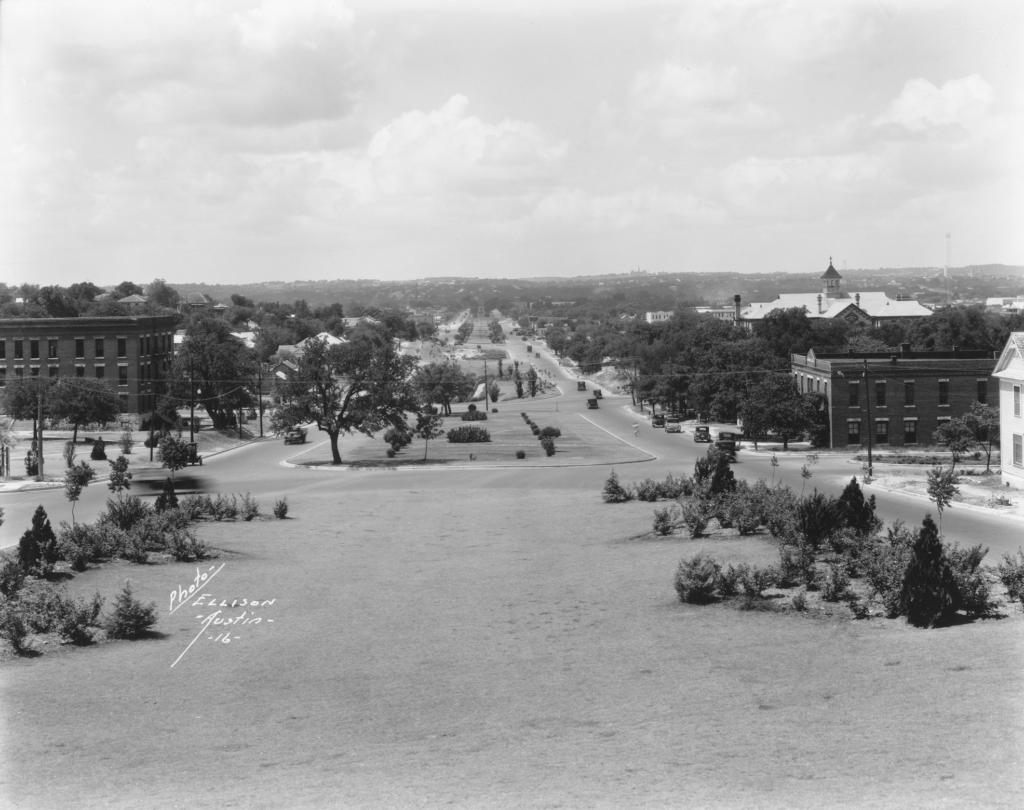
Few of Austin’s historic older streets loom as large as East Avenue. Historically viewed as a racial and ethnic dividing line, pieces of East Avenue still exist, but most is underneath US Interstate 35, completed in 1960.
This elevated view of a newly paved East Avenue looks south from the stone lookout platform at Twelfth Street, with Bickler Academy (building with cupola) to the right at Eleventh Street.
Here’s what the southbound view between 11th and 12avenues at I-35 looks like today:
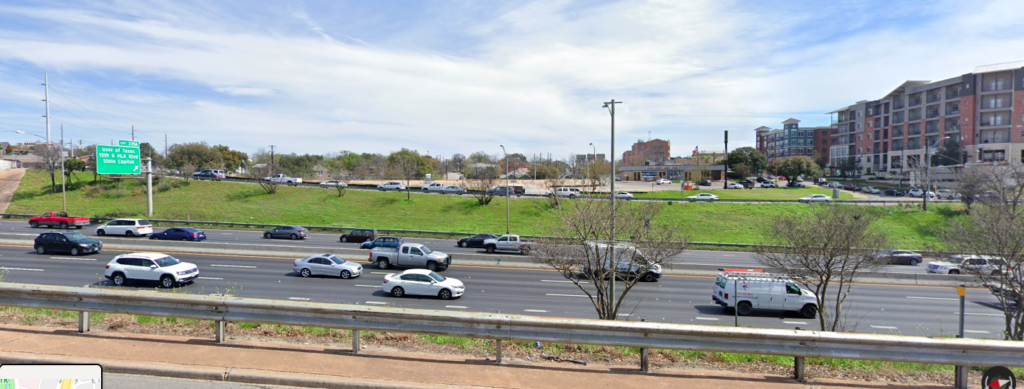
Travis County Capitol
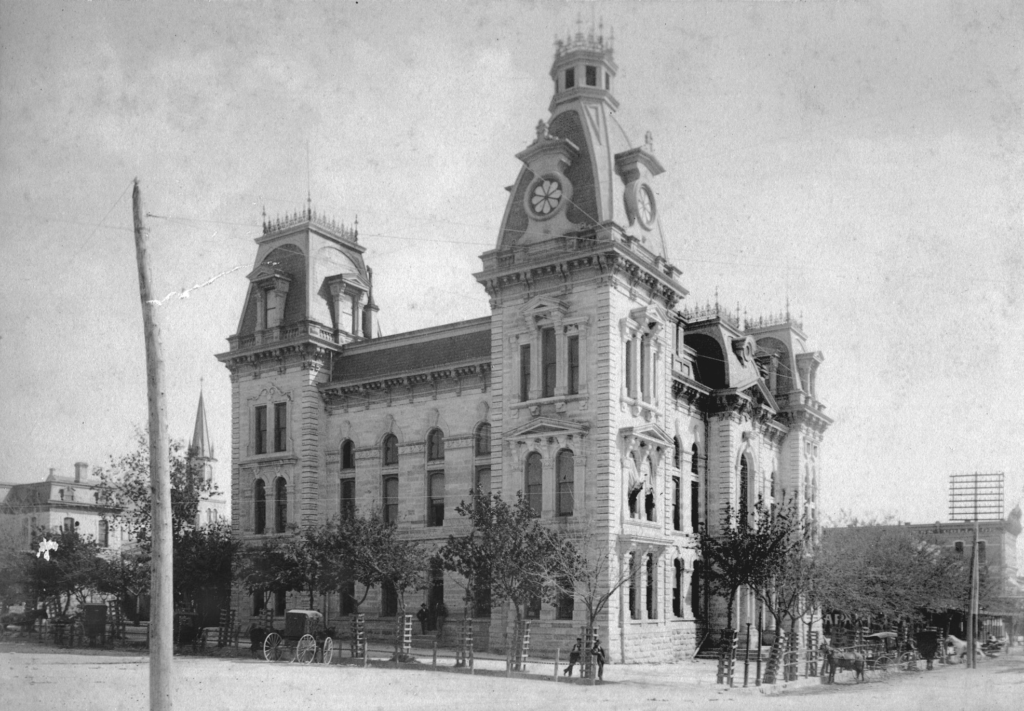
Travis County’s courthouse from 1855 to 1875 had been small and simple, but the new courthouse that opened in 1876 was monumental, elegant, and ornate. A three-story limestone building erected for $100,000 by Burt McDonald from plans drawn by Jacob Larmour and Charles Wheelock, it was Austin’s best example of Second Empire architecture.
Complete with ironwork cresting, decorative dormers, and mansard roofs, the courthouse stood on the southeast corner of Eleventh Street and Congress Avenue, directly across from the Texas State Capitol. By 1927, the distinctive cupolas had disintegrated and were removed. It was remodeled as the Walton Building and used as offices for state agencies before it was demolished in 1964. Since then, the site has been used as a parking lot.
Discover Lost history from Austin in Lost Austin by John H. Slate
Brackenridge Hall
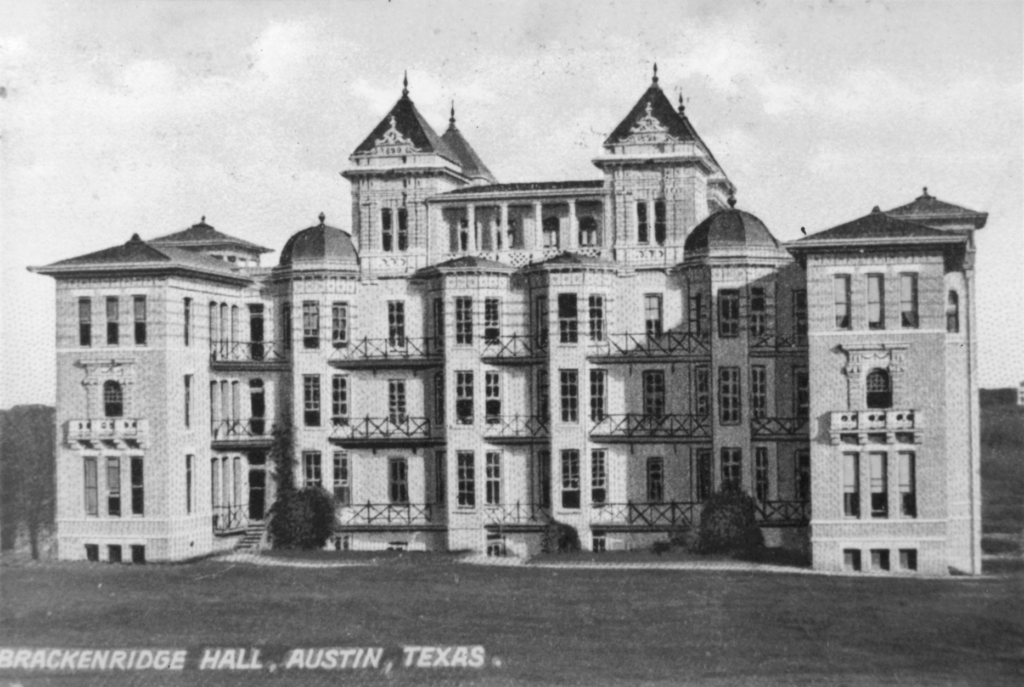
Brackenridge Hall, known as “B Hall,” was a men’s dormitory built in 1890 that housed generations of student leaders and future greats. Speaker of the House Sam Rayburn and Sen. Ralph Yarborough lived there as students.
The building stood where the campus East Mall abuts the Main Mall. The birthplace of “The Eyes of Texas” (the UT school song) and the site of countless student pranks, B Hall was torn down in 1952.
Armadillo World Headquarters
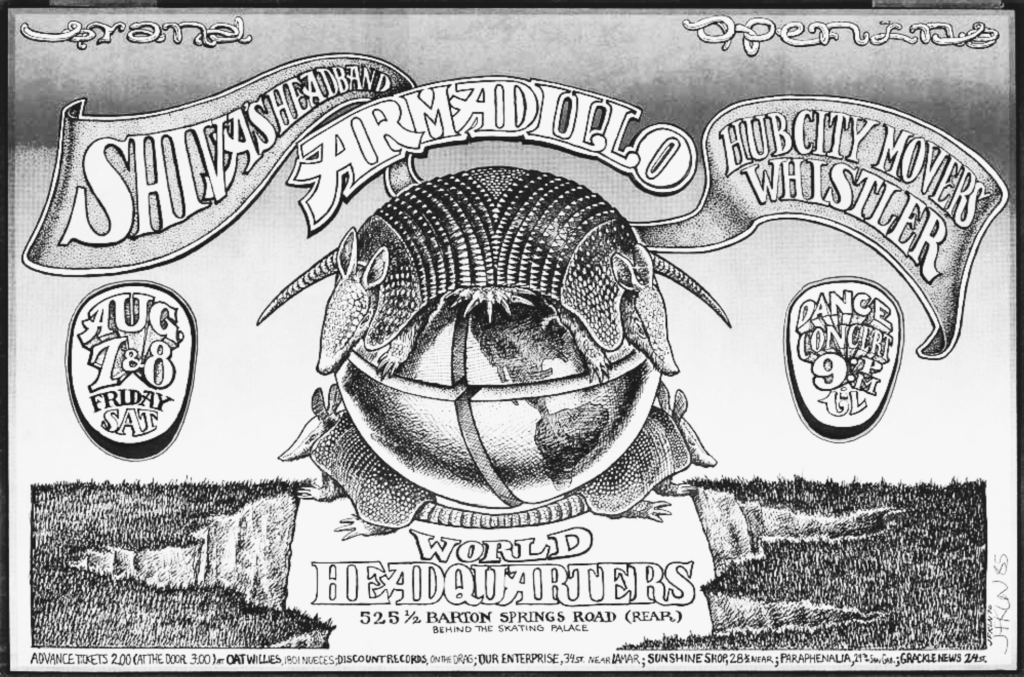
The Armadillo World Headquarters, known to all as the Armadillo, was Austin’s legendary concert hall, located at 525 1/2 Barton Springs Road. Opened by Eddie Wilson and colleagues Jim Franklin, Spencer Perskin, Mike Tolleson, Bobby Hedderman, and Hank Alrich, the Armadillo was more than just a music venue, hosting other institutions such as the Austin Ballet Theatre and the Armadillo Christmas Bazaar. During its life, from 1970 to 1980, the former National Guard armory featured performers including Taj Mahal, Asleep at the Wheel, The Clash, B.B. King, Jerry Jeff Walker, Parliament-Funkadelic, Willie Nelson, Edgar and Johnny Winter, and the Pointer Sisters. (Photos courtesy Steve Hopson, South Austtin Popular Culture Center, and Jim Franklin.)
Vulcan Gas Company
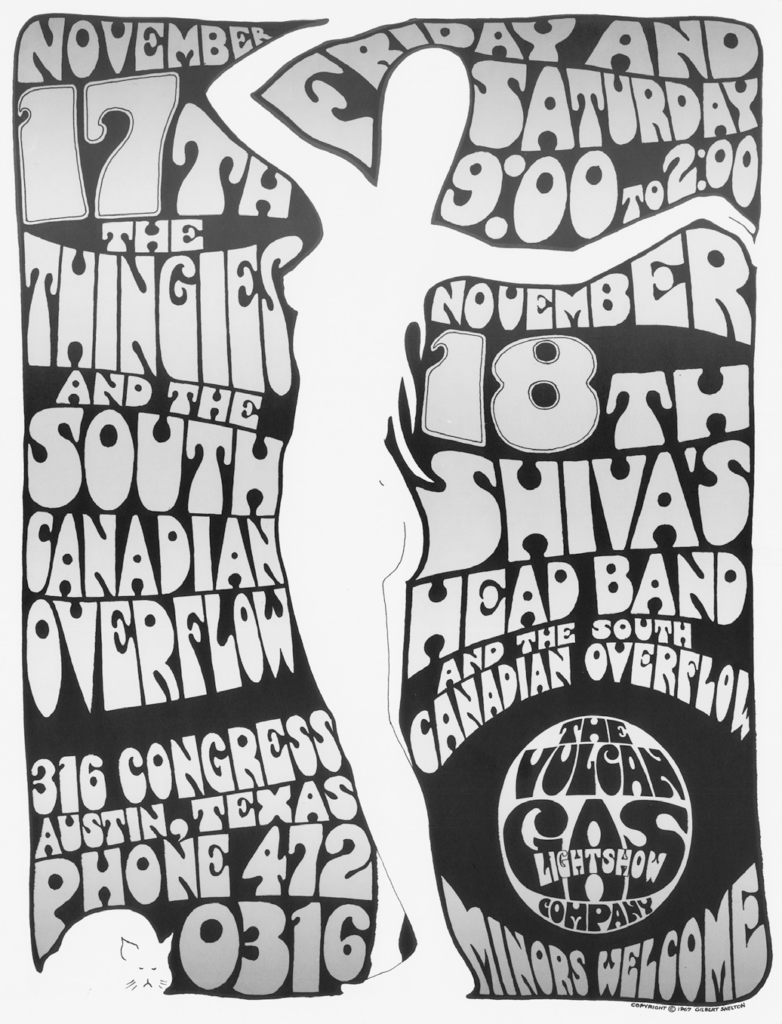
Before the Armadillo, Austin’s premier alternative music establishment was the Vulcan Gas Company. Opened by Houston White in 1966, the spacious club at 316 Congress Avenue featured local favorites, but also played host to touring acts like Johnny Winter, the Fugs, and blues master Mance Lipscomb. It closed in 1970, and the building later housed other clubs, including Duke’s Royal Coach Inn.
Liberty Lunch
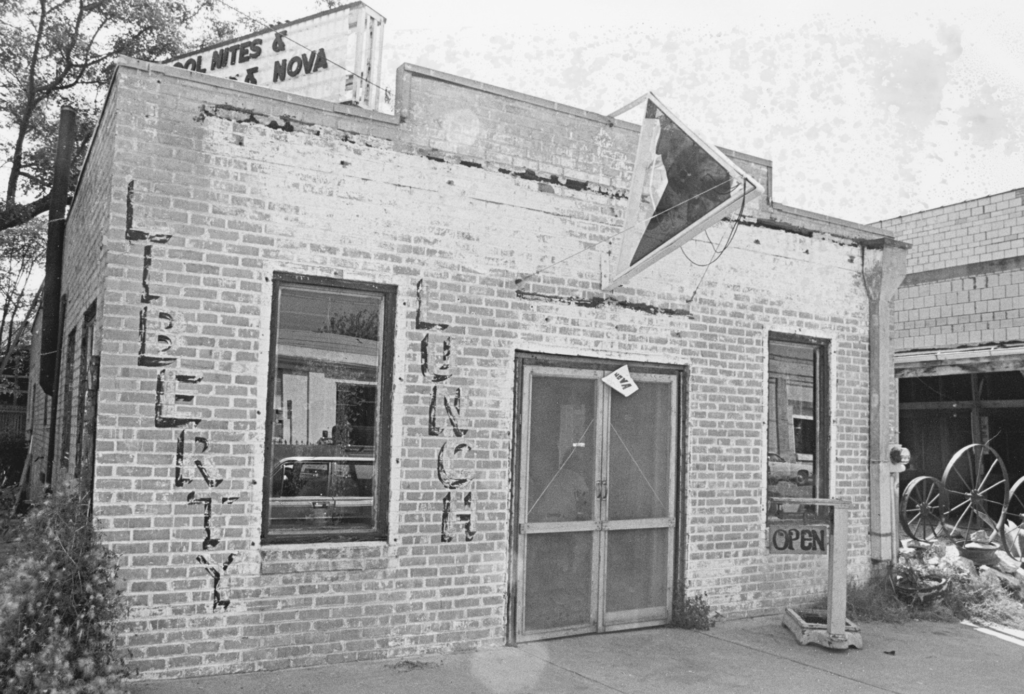
Another gem that follows after the Armadillo, one of Austin’s most beloved music halls was the visually unimpressive shed called Liberty Lunch. This bare-bones stage and beer garden was opened in 1976 by Shannon Sedwick and Michael Shelton of Esther’s Follies. When it needed a roof, some of the wood and metal from the demolished Armadillo was repurposed.
Its cavernous size made it ideal for traveling acts too large for small clubs. From local acts to Nirvana to Sun Ra, Liberty Lunch became an important tour stop. Into the 1990s under J’Net Ward and Mark Pratz, it hosted many punk and alternative rock groups, but was forced to close in 1999 to make way for downtown redevelopment.
Johnson & Scott Barbershop
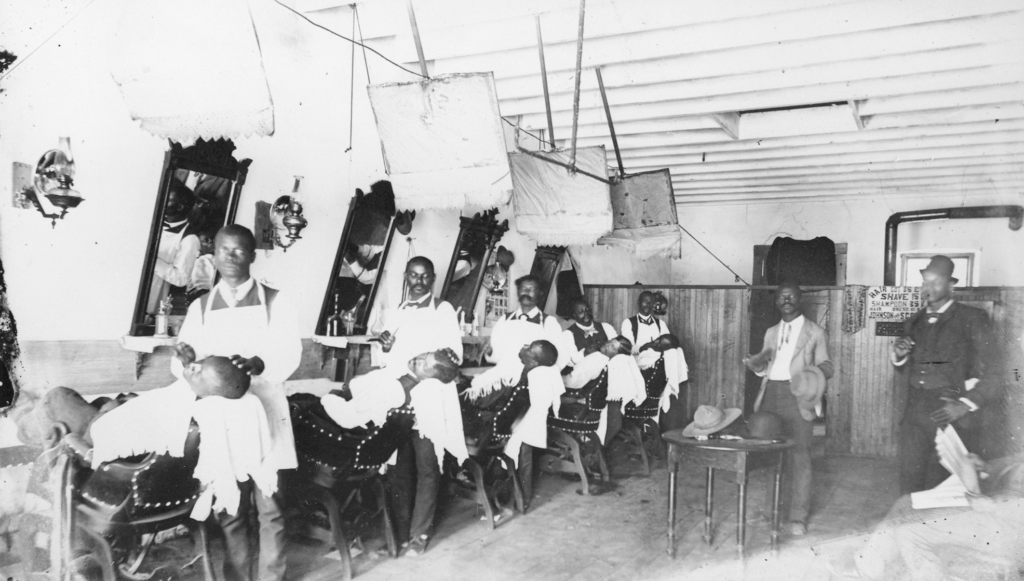
Little is known about the Johnson and Scott barbershop at 310 East Sixth Street, but Hubert Jones’s promotional photograph from about 1885 demonstrates the upward movement of African American businesses in Austin.



